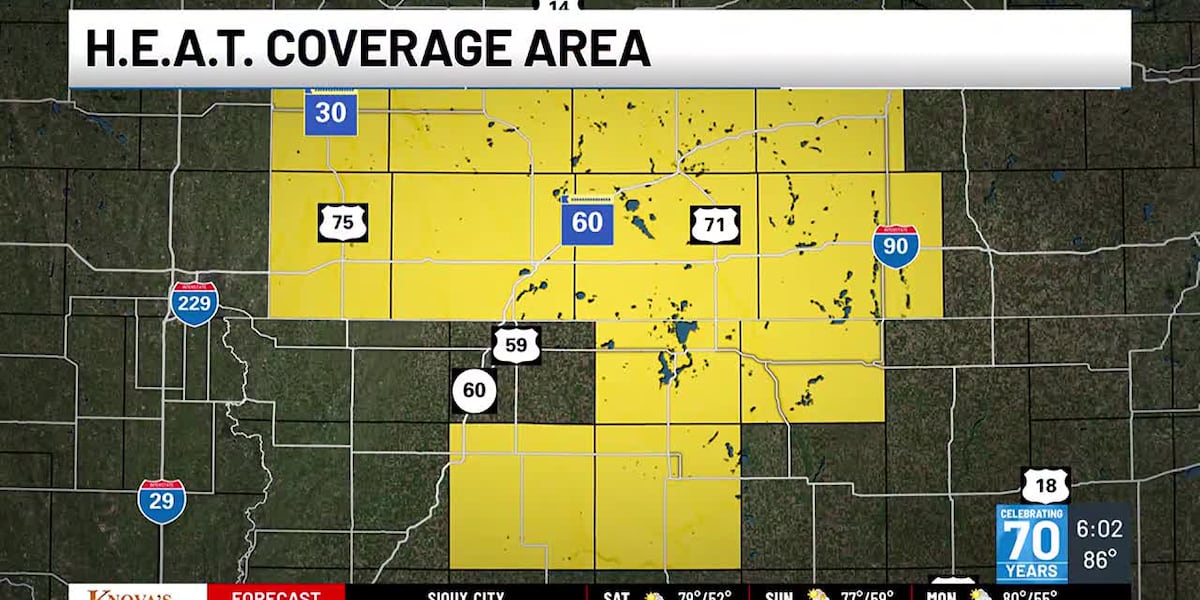Technology
6 effective ways to stop Google from knowing everything about you
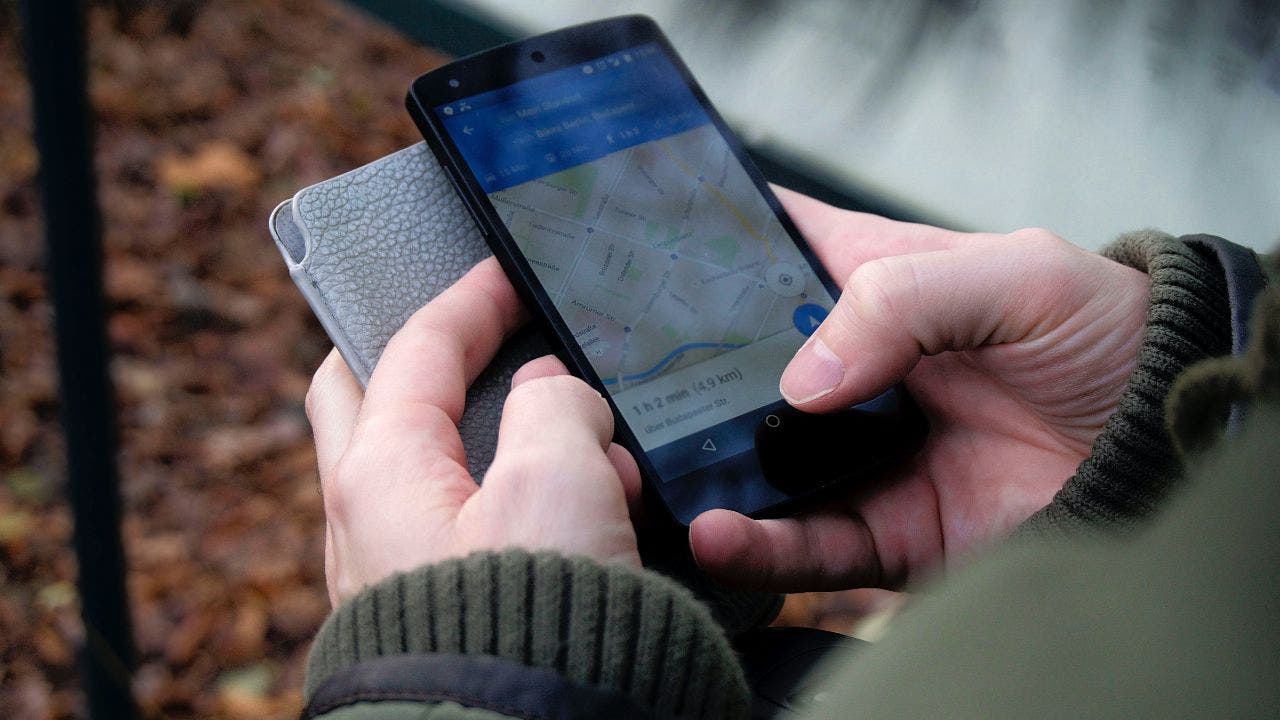
When it comes to your privacy, we all know that Google is one of the biggest in the tech world when it comes to collecting your data. What you may not know, however, is exactly how much Google knows about you.
CLICK TO GET KURT’S FREE CYBERGUY NEWSLETTER WITH MORE PRIVACY AND SECURITY ALERTS, QUICK TIPS, TECH REVIEWS, AND EASY HOW-TO’S TO MAKE YOU SMARTER
That’s right, Google collects personal data on anyone it can find, and that includes you. Here’s how you can find out just what Google knows about you and how to manage your privacy settings to win back some of your life.
1. Your location status
If you have a Google account and have your Location History enabled, Google will keep an entire timeline of your locations. Google Maps keeps track of every place in the world you’ve visited.
In a way, that can be seen as convenient, because you can know exactly when and where you’ve traveled over the years. However, if you’d rather keep that information private, then it can be an alarming discovery.
HOW TO SCRUB YOUR PHONE NUMBER AND ADDRESS FROM A GOOGLE SEARCH
How to check your location timeline on Google
If you’re using a computer, follow these steps:
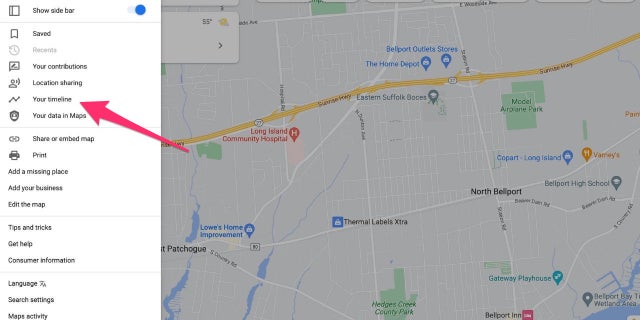
Google Timeline (Fox News)
Sign in to your Google account and go to google.com/maps
Click the 3 horizontal lines in the top left-hand corner
Click Your Timeline
Put in a date to show where you were on that day
If you’re using an iPhone or Android, follow these steps:

If yours is on, select Turn Off and click Pause to confirm.
FOR MORE OF MY PRIVACY TIPS, SUBSCRIBE TO MY FREE CYBERGUY REPORT NEWSLETTER BY AT CYBERGUY.COM/NEWSLETTER
2. Turn off Facial Recognition
With Google Photos, Google offers you a quick way to upload photos and search for a specific person by using facial recognition. Although facial recognition has become popular when it comes to unlocking your smartphone, handing over your facial data to a tech giant like Google can risk the chance of the company gathering data without your knowledge, sharing it with third parties, and potentially misusing it.
Here’s how you can shut this feature off:
Open photos.google.com on your desktop or laptop computer

Google settings for your pictures ( )
Click the gear icon at the top right of the page

Search for images on Google ( )
About 4 rows down the page, go to the “Group similar faces” row, and click the downward arrow
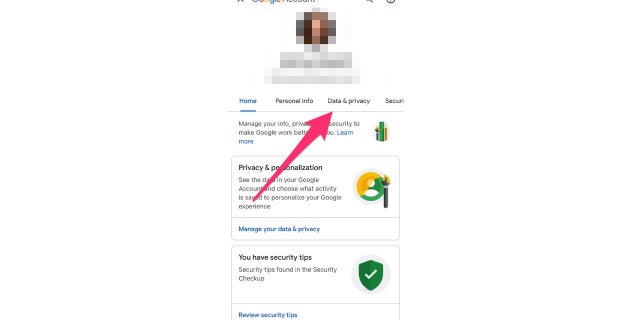
Data and privacy on Google ( )
HOW TO STOP GOOGLE FROM ITS CREEPY WAY OF USING YOU FOR FACIAL RECOGNITION
3. Review all of your Google Photos
Google is also capable of tracking your location via Google Photos. You may not even realize it, yet every photo you take and store within Google Photos has location data on it, showing when and where you took the photos. You can see what information Google has on each of your photos by following the steps below.
If you are using a computer:
Go to photos.google.com and click on a photo

Google Photos label can be remove ( )
Tap the “i” icon for Info.
All the information on that photo, including when and where it was taken, will be on this page.
If you are using the Google Photos app:

Google photo apps in your phone ( )
Open the Google Photos app, and then in the bottom bar, tap Search.

Search for images on Google ( )
OOGLE CHROME’S ‘INCOGNITO’ MODE MIGHT NOT KEEP YOU SO HIDDEN
How to turn off location data on your Google Photos:
There is a way for you to turn off the feature that allows Google Photos to estimate where your picture was taken. Here’s how to do it:
Open your Google Photos app.
Click your profile icon.

Google settings for your pictures ( )
Select Google Photos settings.
Click Location.

Data and privacy on Google ( )
Tap Location sources.
Toggle off Estimate missing locations.
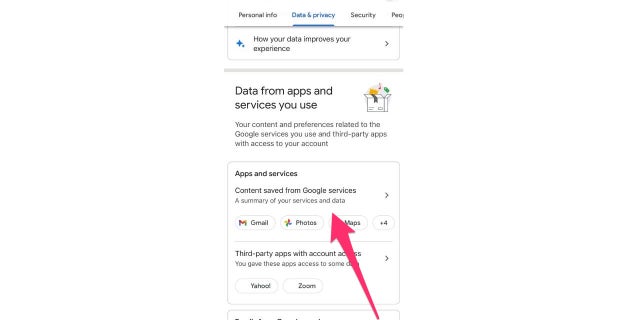
Apps and Services in Google ( )
FOR MORE OF MY PRIVACY TIPS, SUBSCRIBE TO MY FREE CYBERGUY REPORT NEWSLETTER AT CYBERGUY.COM/NEWSLETTER
4. Personalized ads
Personalizing ads is one of the main things Google will focus on for your account. This keeps track of all your browsing data, search history, and more, all so that Google can do things like send you personalized ads or adjust its algorithms to guess what you like. Every tech giant wants to make as much money as possible, and this is the main way that Google can do so. However, knowing that people are snooping on what you’re searching for is not a great feeling and is super-invasive.
If you don’t like this idea, it’s simple to turn the feature off. Follow these steps to do so:
Sign-in to your Google account.

Google settings for your pictures ( )
Click your Profile icon in the top right corner.
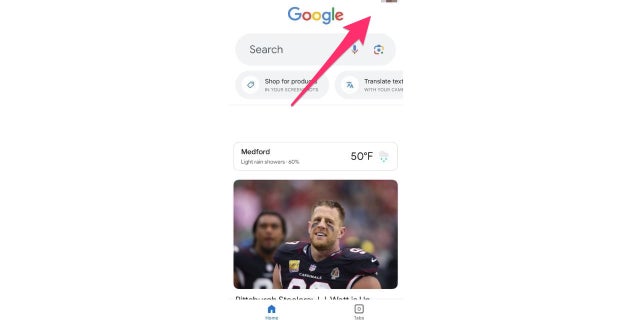
Google Profile in your account ( )
In the left-hand sidebar, click Data & Privacy.
Scroll down to Personalized Ads, and click My Ad Center.

Pause within your Google account ( )
In the top right corner, turn Personalized ads off.
Click Turn off to confirm.
FOR MORE OF MY PRIVACY TIPS, SUBSCRIBE TO MY FREE CYBERGUY REPORT NEWSLETTER AT CYBERGUY.COM/NEWSLETTER
5. Delete your YouTube history.

Google App in your home page ( )
YouTube is a site that we all use regularly. However, Google will track your YouTube viewing history and recommend videos for you to watch, based on videos you have viewed in the past. Although this can be helpful if you want to keep watching videos that are similar, this can still be an invasion of privacy.
Here’s how to stop this from happening:
Sign-in to your Google account
Click Manage Your Google Account
In the left-hand sidebar, click Data & Privacy
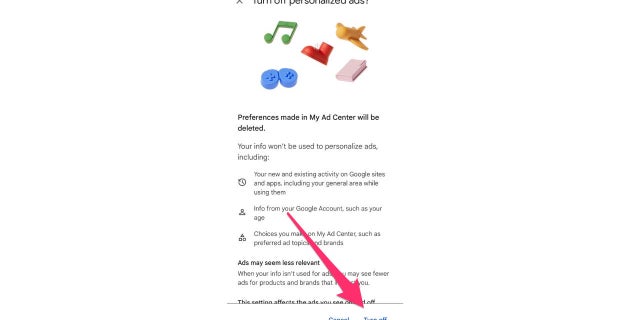
Turn off ads in your Google account ( )
6. Gmail data
If you use Gmail to send and receive email messages, Google is keeping an eye on those, too. It does this because scanning your email messages allows them to send you targeted ads, making them more money. Do you see a theme here? The way you can prevent this from happening is by using a browser that is more privacy-based, such as Mozilla Firefox or Brave.
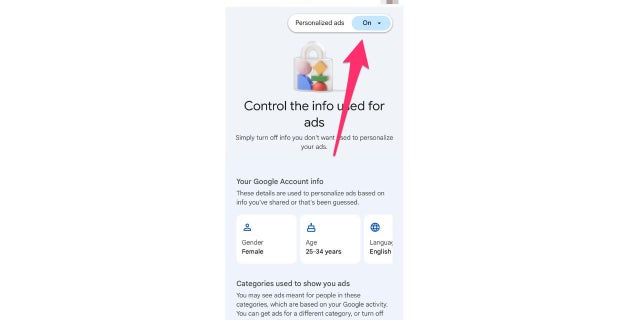
Turn ads on in your Google account ( )
Mozilla Firefox is generally considered to be the browser with the best security features, because it has a strong focus on privacy and security, with built-in features such as tracking protection, phishing and malware protection, and encrypted DNS, so you may have a better shot at protecting your Gmail messages if you log in using this browser.

YouTube history in Google ( )
Final thoughts
Google has a ton of power over the internet. However, you have the power to keep your information private as well. You have the right to protect your information from those who want to take it for their gain, so use these measures that we’ve given above, and take back your privacy from Google for good.
Does Google know too much about us? Let us know by writing us at CyberGuy.com/Contact
For more of my privacy tips, subscribe to my free CyberGuy Report Newsletter at CyberGuy.com/Newsletter
Copyright 2023 CyberGuy.com. All rights reserved.

Technology
Microsoft’s Surface AI event: news, rumors, and lots of Qualcomm laptops
/cdn.vox-cdn.com/uploads/chorus_asset/file/24038601/acastro_STK109_microsoft_02.jpg)
The Snapdragon X Plus is Qualcomm’s entry-level laptop chip. It has 10 cores, 42MB of cache, a maximum multithreaded frequency of 3.4GHz, and an NPU with 45 tera operations per second (TOPS, or how many mathematical calculations it can solve in a second) to assist with fancy-smancy generative AI applications. But keep in mind, TOPS is an arbitrary measurement that can sound more impressive than it is because it doesn’t necessarily take into account the type or quality of those calculations.
Technology
New Teslas might lose Steam
/cdn.vox-cdn.com/uploads/chorus_asset/file/24323284/Screenshot_2022_12_29_at_3.29.06_AM.jpeg)
Tesla might be dropping Steam support on some new deliveries of Model X, according to a message from the company shared by a Reddit user who is expecting to take delivery of the long-range version of the electric SUV.
Tesla’s message alerts the customer that the company is “updating the gaming computer” in the Model X and says it’s “no longer capable of playing Steam games.” The message ends with a button for the customer to confirm they will proceed with the delivery.
There’s no indication that other Tesla models will be affected. And we’re not seeing any signs that the automaker plans to remove Steam from current owners’ vehicles through a software update. However, Tesla’s already seems to be leaning toward dropping Steam support for some other models.
Steam isn’t available in the Cybertruck, for example, and Tesla hasn’t said whether it plans on bringing the gaming platform to its bestselling Model Y and Model 3 vehicles, despite newer models sporting improved AMD Ryzen processors. The company has already removed some games over the years, including Sonic the Hedgehog.
Technology
Is this autonomous security guard robot the protection you need?

They’re not your typical office workers. Standing at 5 feet tall and cruising through the corridors at a leisurely 3 mph, these robotic guards are the latest addition to workplace security.
Gone are the days of the traditional security guard. Now, robots are taking over the night shift and beyond.
How do these security robots work?
Cobalt’s robots are custom-built to navigate the unique challenges of each building, from ramps to elevators. They patrol the hallways, vigilant for signs of trouble – be it an unusual motion after hours or a door left ajar – and report their findings to a human-staffed call center.
CLICK TO GET KURT’S FREE CYBERGUY NEWSLETTER WITH SECURITY ALERTS, QUICK VIDEO TIPS, TECH REVIEWS AND EASY HOW-TO’S TO MAKE YOU SMARTER
These robots can even spot things that might escape the watchful eye of a security camera. They can do this because they are equipped with a depth camera, heat-detecting thermal sensors, 4K cameras that can see 360 degrees, Lidar, as well as a Microphone array for listening and PA system for announcing.

Interactivity and assistance of the security robot
With a simple tap on the screen, employees can summon a 24/7 specialist to address concerns ranging from spills, unwelcome visitors or suspicious activity. This seamless integration of technology and human oversight lets real-life guards spend more time responding and less time observing now that Cobalt is carefully watching on patrol and reporting back what it detects.
WHAT IS ARTIFICIAL INTELLIGENCE (AI)?

MORE: ELECTRIC HUMANOID ROBOT TO SHAKE UP THE JOB MARKET
Case study: DoorDash
DoorDash has embraced Cobalt’s robotic guards across its corporate sites. The result? Enhanced security operations with fewer sick days, no HR complaints, and a boost in both accuracy and response times for security and safety-related incidents.
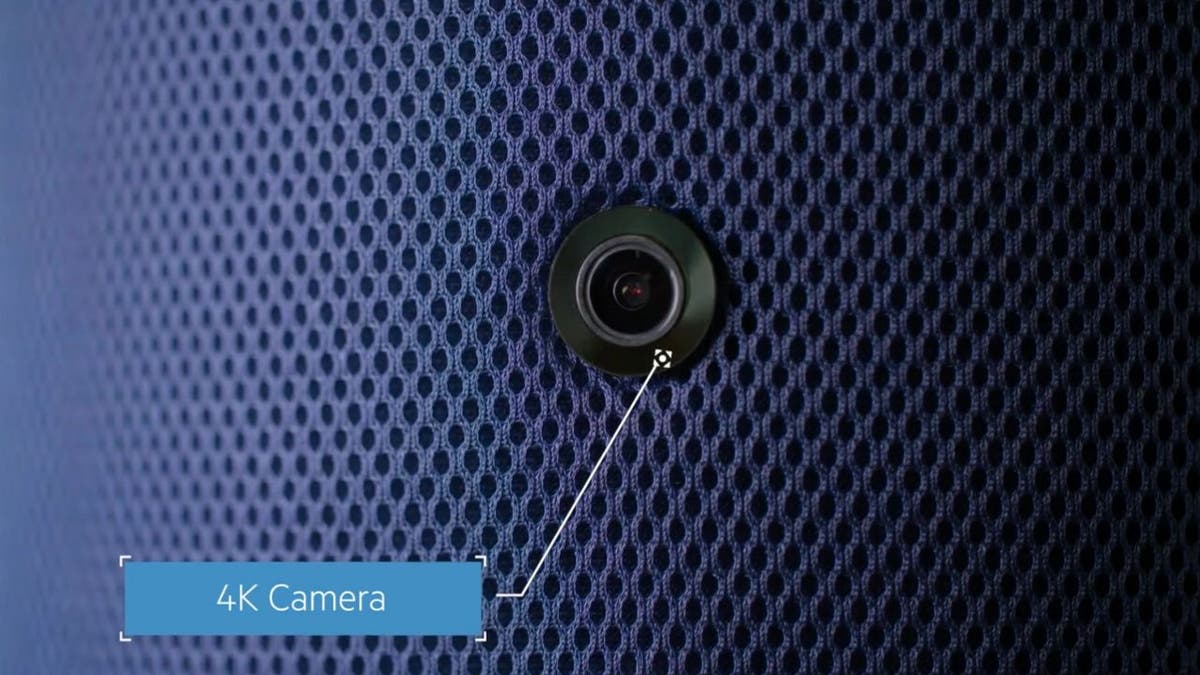
MORE: THE SHAPE-SHIFTING UNDERWATER ROBOT PIONEERING THE DEPTHS OF THE SEA
Robots vs. humans: The numbers
The driving force behind this robotic revolution is money. It’s far more economical for companies to deploy robots for round-the-clock security than to rely solely on human guards. According to Forrester Research, opting for a robotic guard over a human can lead to substantial savings – around $79,000 annually. That’s a figure that’s hard to ignore for any business looking to optimize its operations.

MORE: APOLLO THE ROBOT JOINS MERCEDES-BENZ ASSEMBLY LINE PRODUCTION
The competitive landscape of the security robot
The security robot market is heating up, with competition between indoor and outdoor models. While Cobalt’s robots are indoor specialists, others like Knightscope and SMP Robots are venturing into both terrains, including malls, hotels and industrial sites. And let’s not forget drones, which are starting to make their mark in the security domain.
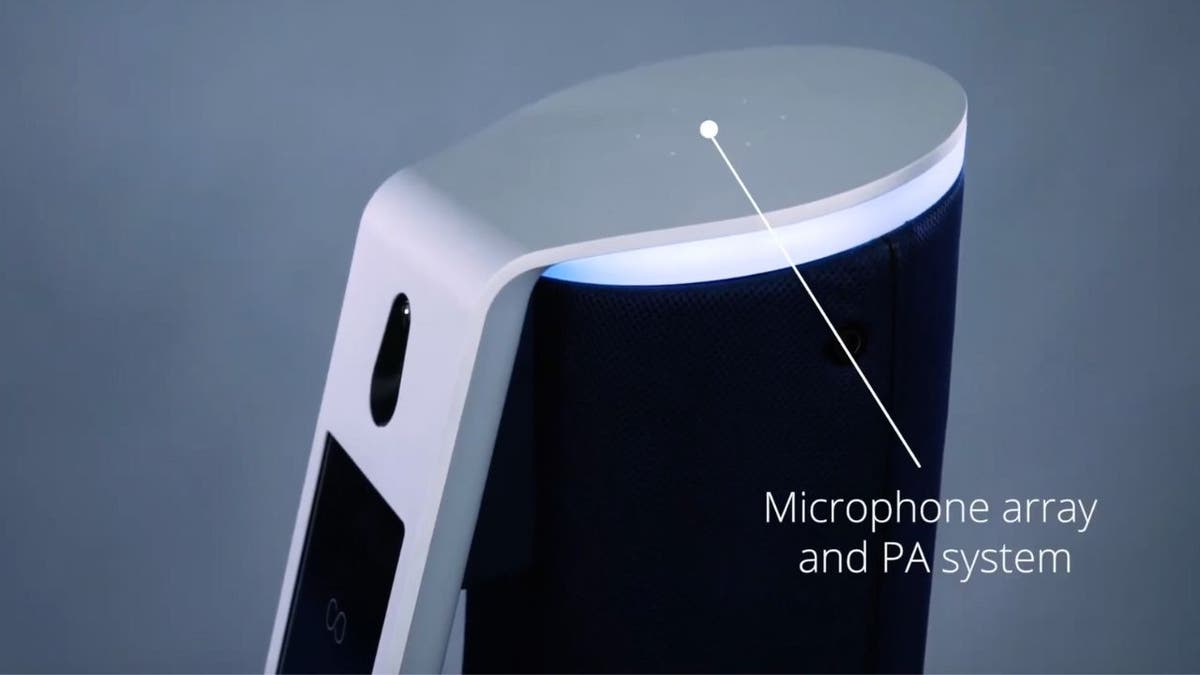
Challenges and considerations of security robots
Of course, it’s not all smooth sailing. Security robots have had their share of mishaps, from minor accidents to malfunctioning in critical situations. And there’s the human factor to consider. Sometimes, nothing can replace the reassurance of a human presence in times of distress.

Kurt’s key takeaways
Despite the occasional glitch, the consensus is clear: Security robots are here to stay, and their presence is set to grow as the technology continues to advance. They may not replace human guards entirely, but they’re redefining the role and allowing humans to focus on more strategic tasks.
What’s your take on these new robot guards? Do you think they’re as trustworthy as human security or are we moving too fast into a tech-driven safety zone? Let us know by writing us at Cyberguy.com/Contact.
For more of my tech tips and security alerts, subscribe to my free CyberGuy Report Newsletter by heading to Cyberguy.com/Newsletter.
Ask Kurt a question or let us know what stories you’d like us to cover.
Answers to the most asked CyberGuy questions:
Copyright 2024 CyberGuy.com. All rights reserved.
-

 Politics1 week ago
Politics1 week agoRFK Jr said a worm ate part of his brain and died in his head
-

 World1 week ago
World1 week agoPentagon chief confirms US pause on weapons shipment to Israel
-

 News1 week ago
News1 week agoStudents and civil rights groups blast police response to campus protests
-

 World1 week ago
World1 week agoConvicted MEP's expense claims must be published: EU court
-

 Politics1 week ago
Politics1 week agoCalifornia Gov Gavin Newsom roasted over video promoting state's ‘record’ tourism: ‘Smoke and mirrors’
-

 Politics1 week ago
Politics1 week agoOhio AG defends letter warning 'woke' masked anti-Israel protesters they face prison time: 'We have a society'
-

 News1 week ago
News1 week agoNine Things We Learned From TikTok’s Lawsuit Against The US Government
-

 Politics1 week ago
Politics1 week agoBiden’s decision to pull Israel weapons shipment kept quiet until after Holocaust remembrance address: report





